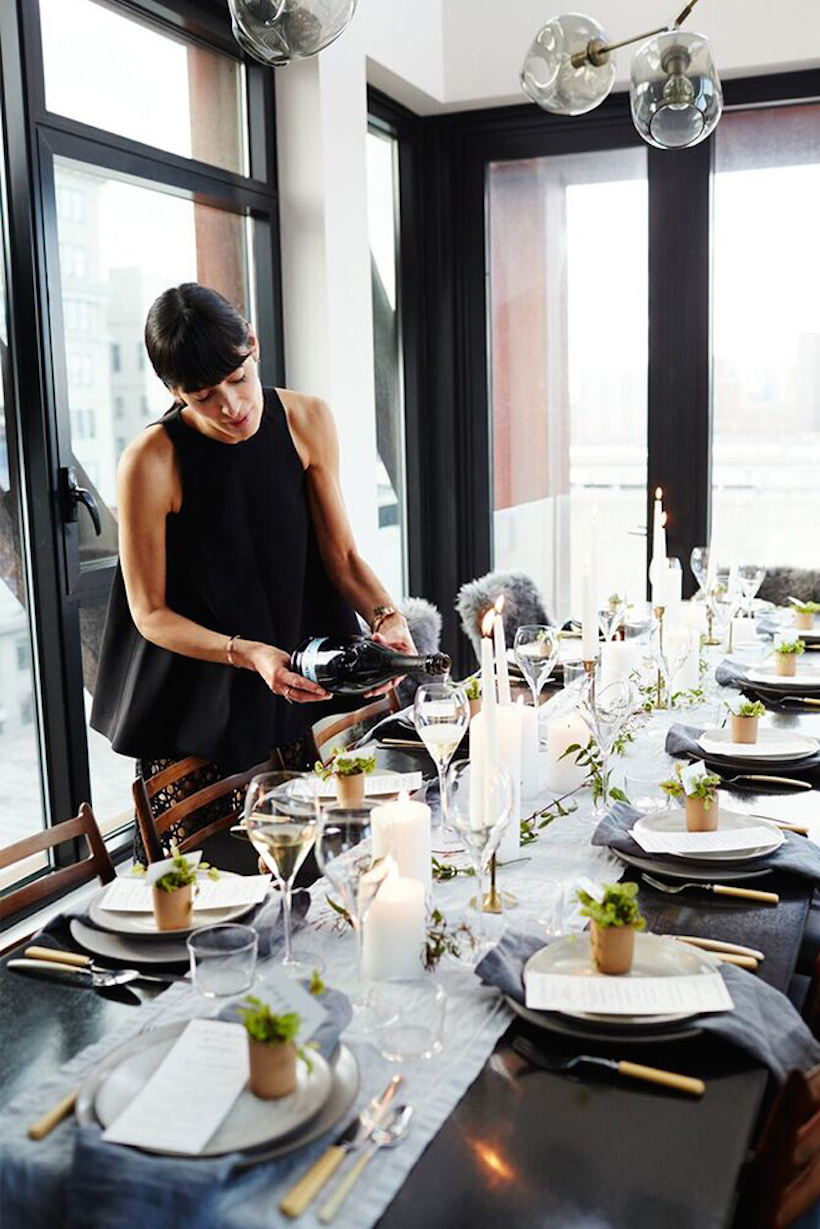Much of what I love about this column is that it’s not solely focused on how to stay in shape or eat healthy. Sure, they are very important and I love sharing my experiences with both, but Living Kindly is dedicated to the broader picture of wellness. Wether that be physical, emotional or mental, they all play a significant role in enjoying the most out of life.
But the one thing we haven’t covered in this column that is just as powerful… financial wellness. I know, money talk can be awkward, though lately, it’s been high on the list of topics with women in my circle. We all have the same questions regarding best practices for saving, investing and even spending. Just as meditation, yoga or a clean house provide clarity and ease, so does having control over your finances. Thankfully, I’m in the process of a financial reorganization and am here to share.

Here’s how I got there: after reading one of Marie Kondo’s books earlier this year, I began tidying up various aspects of my life and arrived to the notion of “Stop Waiting,” which I wrote about last month. During this process, I started taking inventory of everything that could use attention and decided now was a great time to finally meet with a financial planner. While I thought I did a pretty decent job creating a monthly budget and flowed money into savings, I knew there was room for improvement. Much like I look to a personal trainer or cycling coach to teach me how to reach my goals, I needed a financial coach to tell me what to do.
Enter, Whitney Morrison, Certified Financial Planner™ and dare I say, financial game-changer?
I met Whitney via a few friends who hosted a “Money Workshop” that I had to miss. They all came back with glowing reviews of the event, so I knew I had to get on board (I’ve never seen women so excited about saving money). In our first meeting, we took a big picture look at my finances. We went over how I save, how I spend and most importantly, what I value. As a matter of fact, the very first question she asked me was, “What do you value most in life?” From there, she got to learn a little more about me — my obsession with riding bikes, my love for traveling, how much I enjoy nice things, dinners out with friends and even my financial focus right now: less things, more experiences.

Whitney explained that understanding what I value will help shape my buying and saving patterns. I had never looked at my purchases or savings in that vein before, but realized it’s exactly how I approach fitness and training for a specific event. In those scenarios I’m constantly asking myself, “Will this help me reach my training goals or set me back? Will this donut make me feel better in the morning?”
Our initial meeting lasted an hour, and I thought I was going to leave with a headache, stressed-out and wishing I would’ve saved more when I was 23. Instead, I left excited. I felt confident, in control and seriously peaceful. Plus, how could I not be happy after she encouraged me to keep my “bike savings,” knowing how much happiness that brings me.
The one piece of advice that’s had the most impact was her nudge to have me create separate accounts for fixed spending (bills) and one for flex spending (dining out, spa time, shopping). In a matter of 3 weeks, I’ve spent and saved with intention. My income hasn’t changed, but I feel like I have more money. It’s pretty neat to see what can happen when your values dictate your actions, and even more evident that understanding your finances is a key player in your overall well-being.

Read on for Whitney’s 5 Tips on Cleaning Up Your Finances:
Step #1: Identify your values.
How you spend money shouldn’t be a source of guilt and stress, but it should be a constructive practice to help you live your ideal self and life by design. The first part of moving toward this alignment is taking a step back to understand your values. Once you understand what is most important to you and create spending habits that reflect that, how and where you spend your money becomes as much a part of your wellness as what you eat and how you workout. Write down all of your values and circle your Top 5. Then ask yourself, “Am I spending money to get closer to my values?”
Step #2: Create values buckets.
Here you create buckets that represent your values and goals. For instance: health, wellness and self care; travel; design and beautiful things; working towards home ownership; wanting to make a career change, go back to school or start a new business. From here, you can start to figure out ways to flow money towards those buckets. In early stages, it may be difficult to find the resources to fund all of your buckets, but don’t let that stop you. To create the habit of holistic flow, fund each of these buckets monthly, even if that means $5 at a time.

Step #3: Get to know your spending habits.
Start by calculating your fixed living expenses. How much are you committed to spending monthly before you spend a dime on anything else? This includes: mortgage/rent, utilities, minimum credit card payments, memberships, etc. Calculate this number and subtract it from your monthly after-tax income. The number you’re left with is the amount available for your savings, value buckets and flexible spending. Then, ask yourself, “How much of your monthly income are you spending on your fixed living expenses? Are there any expenses that seem less important as you gain more clarity around your values?” As you progress in your journey, use each month as an opportunity to get closer to your health, wealth and happiness. What you consider essentials now will change as your new money mindset changes.
Step #4: Set up new accounts and flow your money.
Set up an account for each of the following: fixed living expenses, flexible spending, savings and personal value buckets. Once your accounts are set up, flow your money monthly into each account.
* Whitney’s Pro Tip: Auto-deposit your monthly income into your flexible spending account. From there, transfer the total cost of your fixed living expenses into your fixed living expenses account (you can divide this number by two if you are paid 2x/month) and fund your savings and values buckets. This prevents you from spending the same dollar twice. Whatever is leftover in your flexible spending account is yours to spend however you wish during the month!
Step #5: Automate and review your progress weekly.
Make everything automatic. Tie all of your auto-debits to your fixed-living expenses account and set up automatic cash sweeps to fund your buckets. This 1-hour task will help save you hours later. It also helps with accountability and execution. Carve out 15-20 minutes a week to check-in with yourself. Are your buckets growing? Reconnect with the intentions you have created around your life and money. Have patience and understand this is a continual process. Use each week as an opportunity to grow both personally and monetarily
If you’re interested in setting up a consultation with Whitney, you can reach her at: [email protected].

image sources: 1. street style from collage vintage 2. a sparkling spring dinner from athena calderone 3. taking notes from popsugar 4. hiking from gal meets glam 5. stairway from garance doré




